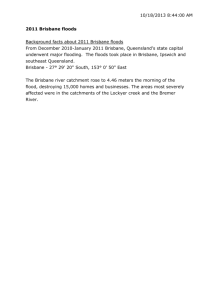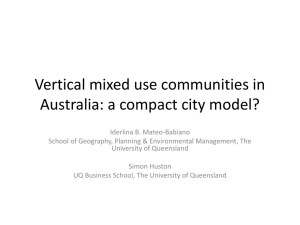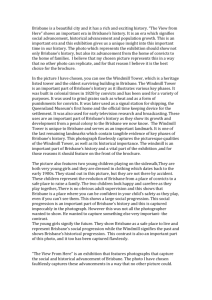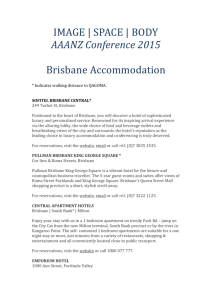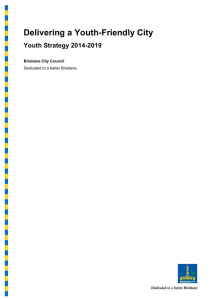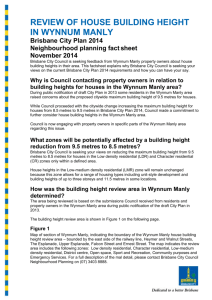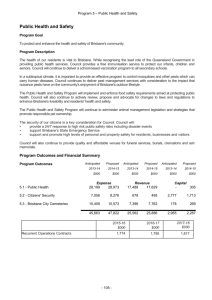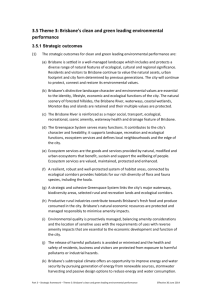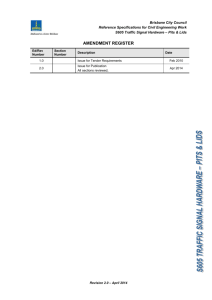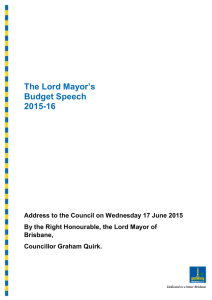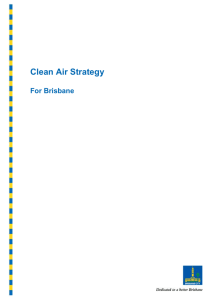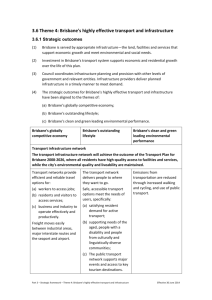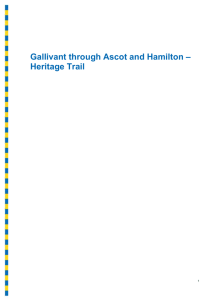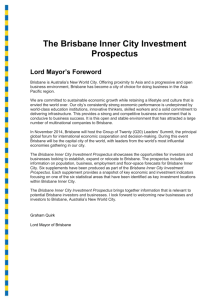The Brisbane Floods 2011
advertisement
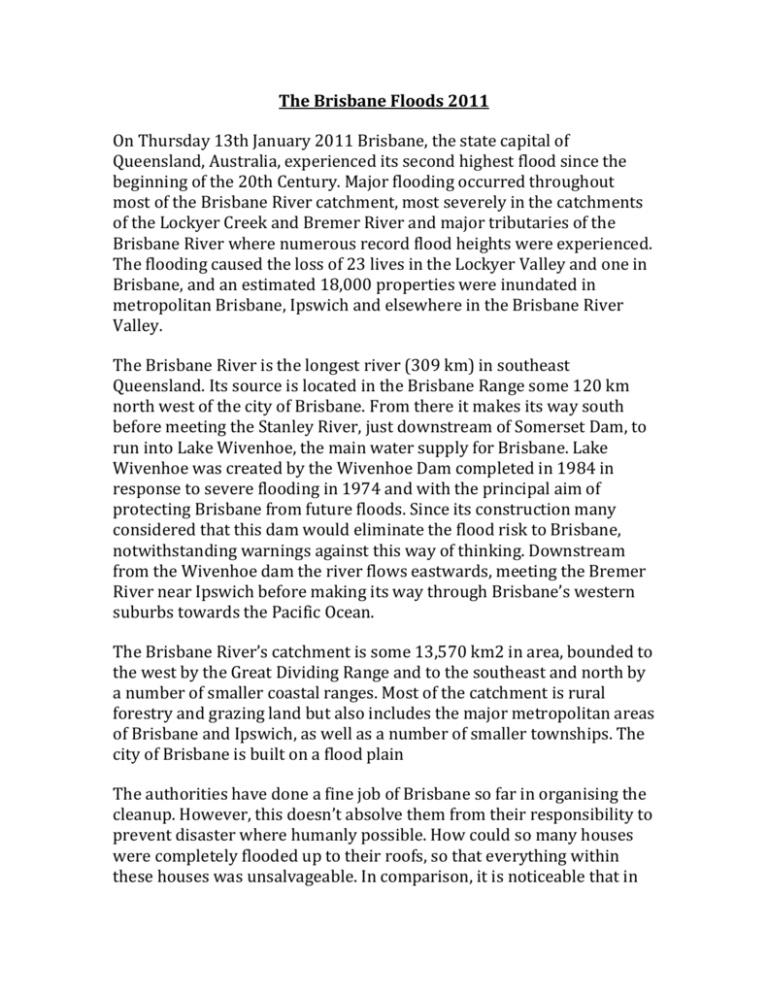
The Brisbane Floods 2011 On Thursday 13th January 2011 Brisbane, the state capital of Queensland, Australia, experienced its second highest flood since the beginning of the 20th Century. Major flooding occurred throughout most of the Brisbane River catchment, most severely in the catchments of the Lockyer Creek and Bremer River and major tributaries of the Brisbane River where numerous record flood heights were experienced. The flooding caused the loss of 23 lives in the Lockyer Valley and one in Brisbane, and an estimated 18,000 properties were inundated in metropolitan Brisbane, Ipswich and elsewhere in the Brisbane River Valley. The Brisbane River is the longest river (309 km) in southeast Queensland. Its source is located in the Brisbane Range some 120 km north west of the city of Brisbane. From there it makes its way south before meeting the Stanley River, just downstream of Somerset Dam, to run into Lake Wivenhoe, the main water supply for Brisbane. Lake Wivenhoe was created by the Wivenhoe Dam completed in 1984 in response to severe flooding in 1974 and with the principal aim of protecting Brisbane from future floods. Since its construction many considered that this dam would eliminate the flood risk to Brisbane, notwithstanding warnings against this way of thinking. Downstream from the Wivenhoe dam the river flows eastwards, meeting the Bremer River near Ipswich before making its way through Brisbane’s western suburbs towards the Pacific Ocean. The Brisbane River’s catchment is some 13,570 km2 in area, bounded to the west by the Great Dividing Range and to the southeast and north by a number of smaller coastal ranges. Most of the catchment is rural forestry and grazing land but also includes the major metropolitan areas of Brisbane and Ipswich, as well as a number of smaller townships. The city of Brisbane is built on a flood plain The authorities have done a fine job of Brisbane so far in organising the cleanup. However, this doesn’t absolve them from their responsibility to prevent disaster where humanly possible. How could so many houses were completely flooded up to their roofs, so that everything within these houses was unsalvageable. In comparison, it is noticeable that in Rockhampton, where flooding is a fairly regular feature of life, residents were high and dry in their old Queenslander style houses (those ones set up on stilts). The worst affected people in Brisbane, however, were mostly living in ground-level brick bungalows. The solution to this disaster appears obvious if you are going to build on a floodplain, ensure that all the living areas are above the level of at least the most recent severe flood. There probably should not be any houses built on flood plains at all, but instead they should be covered in parks and sporting grounds. But this would mean that the Government would have to reclaim all the houses that were badly affected by the recent floods. The floods were terrifying, the cleanup has been disgusting, the community spirit shown astounding and uplifting. But as the hard questions begin to be asked and some painful answers received, it will be many people’s livelihoods and professional reputations that may be the final victims of the Great Flood of 2011. At the end of it all, though, perhaps a plan will be put in place to ensure that when the floods hit Queensland next time, as they surely will, people won’t be losing their treasures or their lives. By Lara Conyers

